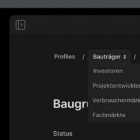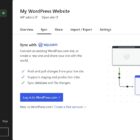With the average lifespan of a website being somewhere between 3 and 5 years, chances are that you’ll have a website redesign project soon (if you aren’t already working on one.)
The foundation of a solid redesign is strategy. What do you (or your client) hope to get out of the redesign? Why is the change being made? What does success look like?
Answer these questions and it will help bring the design together. Plus, we have a few more tips for developing a website redesign strategy. (Take note of the images in this post, they are pretty nifty website designs from the Design Shack gallery.)
1. Start with an Audit

As a website starts to age, it can be somewhat easier to take a critical eye to it. This is a healthy first step when it comes to planning a redesign.
Audit the site from everything to content and information to goals to the way it looks. Understanding what works – and what might not work – can help determine what you want from a redesign.
Here are a few questions you should be able to answer about your current website to help develop a strategy for your new one:
- How big is your website (number of pages and blog posts)?
- What is the most popular content?
- How many people visit your website each week/month/year?
- Are there new types of content or pages that you want in the redesign?
- Are there features you wish you had on your website but don’t?
- What do you love about your current website?
- What do you hate about your current website?
- Does the website need to link to other tools (such as a booking system or payment gateway)?
2. Develop Measurable Goals

Websites come with all kinds of different goals. To make the most of a redesign set measurable goals for success. You want to know if the work you put in is working as intended.
Often, website redesign goals connect to overall business goals. Some are easier to quantify, such as sales. Others can be a lot more difficult, such as figuring out how many people actually read an article (and not just visited a page).
Measurable goals from your website might include (but are not limited to the following):
- Number or type of visitors each month (from a certain place or certain type of device, for example)
- Number of phone calls from the website
- Website orders, downloads, or sales
- Action conversions, such as filling out a form, visiting a specific page, or completing a game or task
- Generating leads for an off-line sales team
- Users spending more time on the website
3. Review and Adapt Content

Will existing content move to the new website design or will it get a makeover as well?
Evaluate each page of the current website and edit and/or remove pages to fit the redesign. You can start adding new content as well.
Making changes to content ahead of time can be a huge help, particularly for a large website that will get moved over to a new design. Most users find it easier and faster to make changes in the old system, rather than making adjustments and trying to learn the new design (or even new content management system) at the same time.
When it comes to reviewing and adapting content, it’s important to think critically about it. Will this content match the visual aesthetic and voice of the new site? (or how can you make sure the new design fits this content?)
4. “Order” New Content

The most challenging part of a website redesign strategy is visualizing new content.
Do you need new photos or video? New articles or information for web pages? New branding or color palette?
Make a list of all the new content necessary for the redesign and start “ordering” that new content from your team or vendors. The design will be hard to see and even harder to put together if core components of the design aren’t available.
When making these assignments, be clear about what you want and need and how the phones, video, and other content will be used. (You don’t want to get a bunch of square photos back if your wireframe uses another shape.
5. Consider New Features

Technology moves fast. There might be dozens of new tools and features available to you now that were not a part of your last website design.
Just think of how dominant video has gotten thanks to greater availability of high-speed internet.
Are there new features that you want to be a part of this project? How feasible are they? What costs are associated with them? How can you work them into your redesign?
Also, go back to your audit and look for things you wish you could do with the website. New technology might make it possible if that wasn’t the case the last time around.
6. Plan Within Your Budget

Set a realistic budget expectation.
The price for a website redesign can depend on a lot of things – from the age of your existing site, features and content, timeline, and more.
You have to plan a project that fits within your budget. If you are expecting to redesign your website and add ecommerce tools for $500, you are likely to be disappointed.
We have a guide here to what a website design costs to help you navigate budgetary issues. (For most clients, it is more than they expect.) https://designshack.net/articles/business-articles/how-much-does-a-website-cost/
7. Set Up Maintenance and Marketing

The final part of your website redesign strategy is to think about how you’ll manage the website post-launch.
That includes two considerations:
- Website maintenance
- Marketing and promotion
Proper website maintenance will keep the site running longer and more efficiently in the long run. This can include someone who installs updates or just ensures that everything is functioning as intended.
Marketing and promotion will help people find your website. If no one knows it is there, it will be hard to meet any goals that you have set.
Both are key parts of ensuring your website redesign is as successful as possible. Neglecting either of these things can cause a lot of consternation (and work) later.
Conclusion
A website redesign can be a significant business investment. Developing a strategy for the redesign and metrics for success will help you create something that you’ll love and be able to use for a longer period of time. Good luck!




